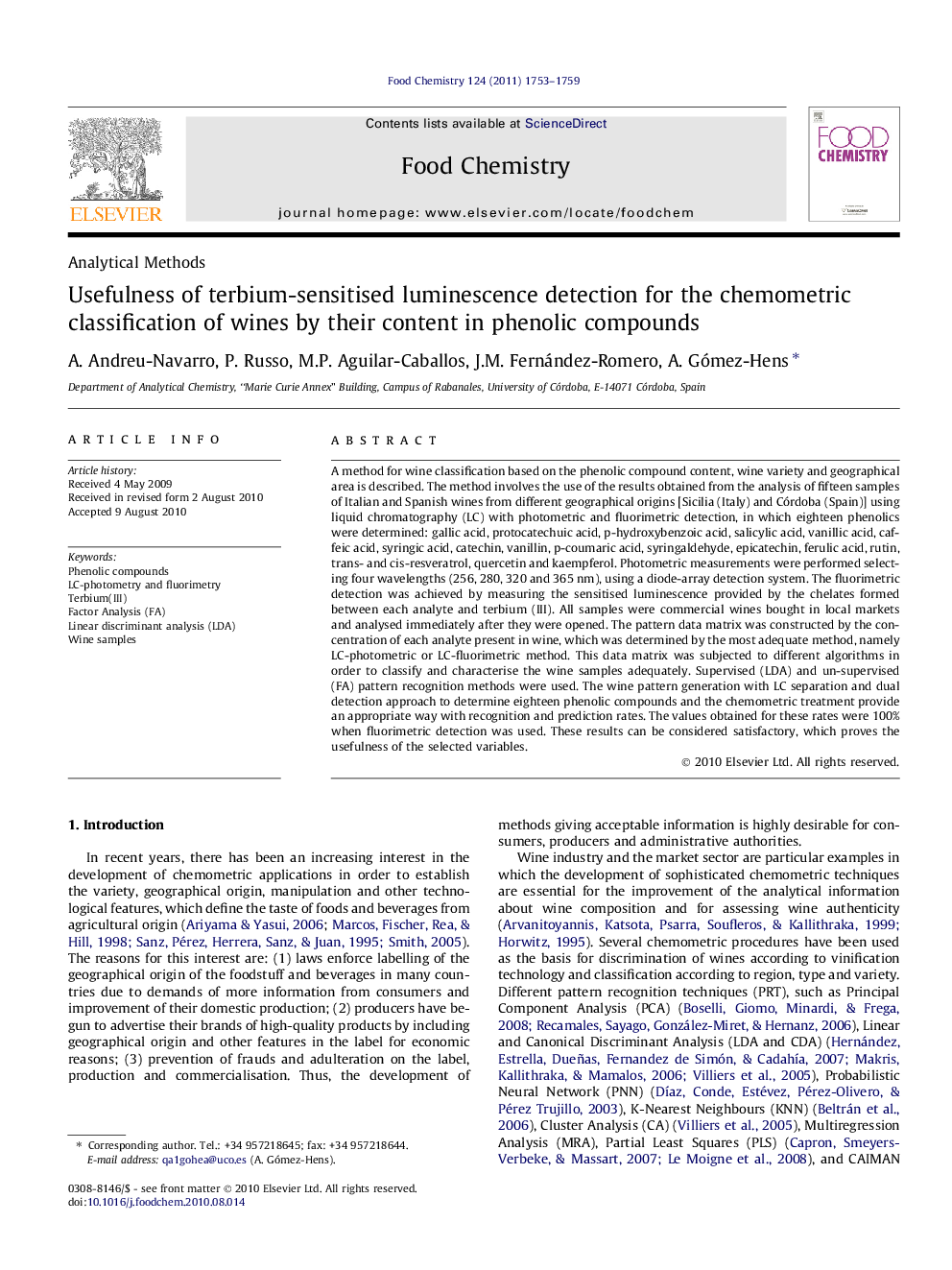| کد مقاله | کد نشریه | سال انتشار | مقاله انگلیسی | نسخه تمام متن |
|---|---|---|---|---|
| 1189948 | 963521 | 2011 | 7 صفحه PDF | دانلود رایگان |

A method for wine classification based on the phenolic compound content, wine variety and geographical area is described. The method involves the use of the results obtained from the analysis of fifteen samples of Italian and Spanish wines from different geographical origins [Sicilia (Italy) and Córdoba (Spain)] using liquid chromatography (LC) with photometric and fluorimetric detection, in which eighteen phenolics were determined: gallic acid, protocatechuic acid, p-hydroxybenzoic acid, salicylic acid, vanillic acid, caffeic acid, syringic acid, catechin, vanillin, p-coumaric acid, syringaldehyde, epicatechin, ferulic acid, rutin, trans- and cis-resveratrol, quercetin and kaempferol. Photometric measurements were performed selecting four wavelengths (256, 280, 320 and 365 nm), using a diode-array detection system. The fluorimetric detection was achieved by measuring the sensitised luminescence provided by the chelates formed between each analyte and terbium (III). All samples were commercial wines bought in local markets and analysed immediately after they were opened. The pattern data matrix was constructed by the concentration of each analyte present in wine, which was determined by the most adequate method, namely LC-photometric or LC-fluorimetric method. This data matrix was subjected to different algorithms in order to classify and characterise the wine samples adequately. Supervised (LDA) and un-supervised (FA) pattern recognition methods were used. The wine pattern generation with LC separation and dual detection approach to determine eighteen phenolic compounds and the chemometric treatment provide an appropriate way with recognition and prediction rates. The values obtained for these rates were 100% when fluorimetric detection was used. These results can be considered satisfactory, which proves the usefulness of the selected variables.
Journal: Food Chemistry - Volume 124, Issue 4, 15 February 2011, Pages 1753–1759